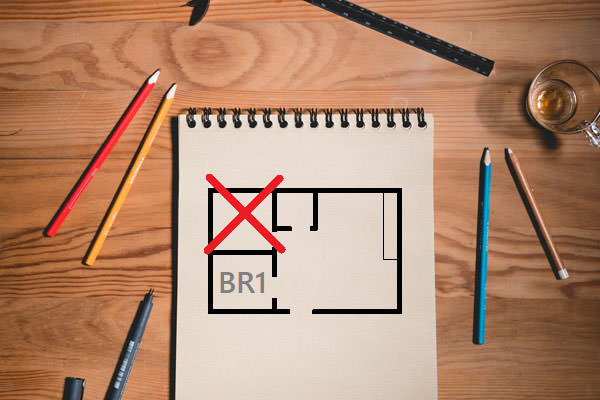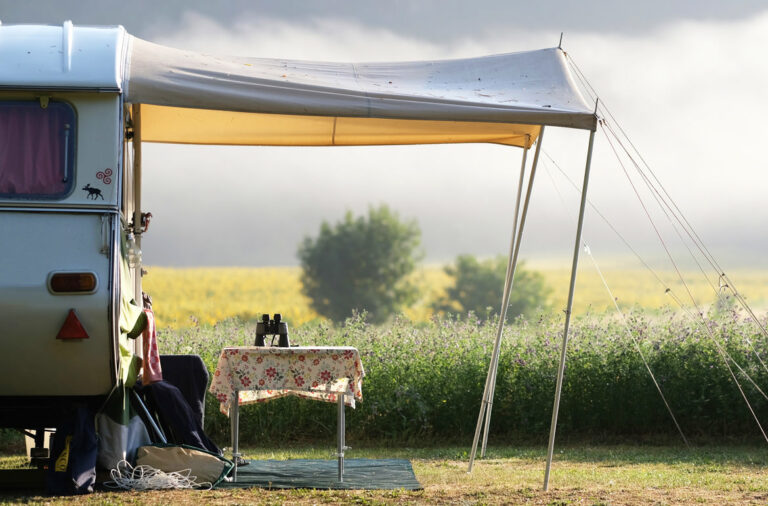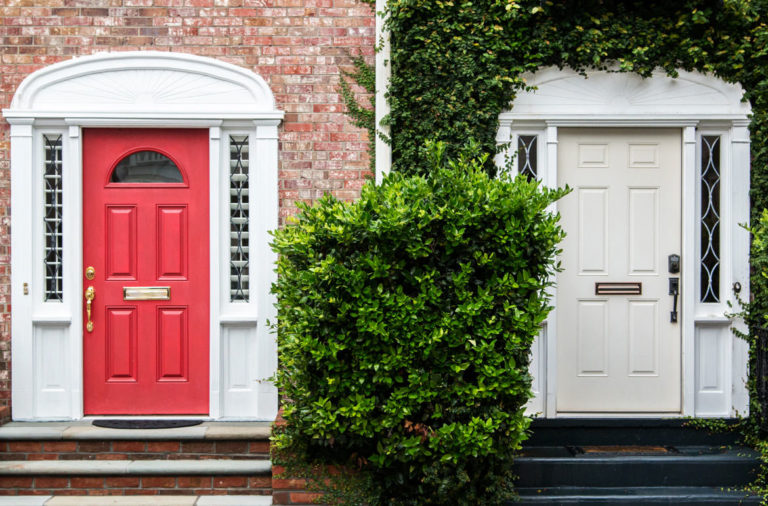
When building a granny flat (also called an ancillary dwelling) in South Australia, the SA Government has a streamlined process statewide, to make it easier for you to be approved to build. Abide by these regulations, and check that you meet the “deemed-to-satisfy” rules for your property’s zone, and you should get the go-ahead to build. Here is a summary of rules for Granny Flats in SA:
- Your property must be a minimum of 600sqm.
- Your floor size can be a maximum of 60sqm.
- You can have a maximum of two rooms, with one potentially being a bedroom.
- The dwelling must share all services with the main house (power, water, sewer, and driveway), and
- You must provide at least 20sqm private open space.
I will let you know how you can do all of these things, and build a granny flat, in South Australia. And discuss the cost of building a granny flat in Adelaide.
I will also compile a list of recommended kit home options and granny flat builders in SA.
DON'T PAY A FORTUNE FOR YOUR GRANNY FLAT. Find out how to deal with council and build a granny flat for the lowest cost possible. Learn More.
Update 2023
We have great news for every South Australian. That is, in 2023, new planning rules came into place that now allow granny flats to be rented to anyone you choose.
These changes to the regulations now ensure not just new ancillary dwellings, but all those already in existence, can be leased or rented out to whomever you chose the tenant to be.
Yes, so even if your current Development Approval (DA) says that only a family member of the main home may occupy the granny flat, you are no longer considered to be at fault if you do choose to rent this out to someone who is not family.
This new rule has the potential to bring hundreds of new homes to South Australia, and has been put into place due to the current housing obtainability and affordability problems across the state of SA.
You can check the PlanSA website here, which confirms what I have just said is now legal.
The following changes have also been made to what is considered to be acceptable for these dwellings, in Master Planned Zones:
- Eliminate the accepted development alleyway from being applicable if the site has a building envelope plan overhead.
- Eliminate the accepted development alleyway from being applicable to State Heritage Areas, State Heritage Places, and Local Heritage Places.
- Only allowing the accepted development alleyway to be applicable to plots already in existence.
- The primary street setback requirements have been changed from 3m to 5m, so it is consistent with the Deemed-to-Satisfy (DTS) rules under the Master Planned Township Zone.
- Contain these new regulations listed below:
- If in a Hazards (Flooding) Overlay, Hazards (Flooding – Evidence Required) Overlay or Hazards (Flooding – General) Overlay, then your finished floor level must be at least 300mm above ground (measured from the highest point of kerb of the primary street).
- All side setbacks be consistent with the DTS regulations under the Master Planned Township Zone.
- The living room window must face either street or open space.
- Dimensions for carparks, both covered and uncovered, to be met.
- All garages and carports to be setback so there is allowance for these two carparks (this includes a limit on the width of the garage door).
- Limitations on the width of a driveway if the site has a street front of 10m or under.
- Conditions for the location of where the new driveway crosses over.
These changes where put in place to make for better outcomes in the long-run for all residents of Master Planned Zones, including ensuring apt safety measures being put in place to protect from any future potential issues from floods.
Can You Build a Granny Flat on Your SA Property?
Yes, however…
In early 2021, the SA Government also made some changes to their regulations. These were to make it easier for you to be able to build what was once known as “Dependent Accommodation”, and is now called an “Ancillary Dwelling”. But there are still regulations that you must meet.
The meaning of the name is still the same. It is a building that was always generally used for “supportive” accommodation – for a relative that is dependent on someone in the main home. This can be, for example, a grandparent, or a teenager. But I have gone over the changes made to this regulation in 2023 above.
But back then, to ensure this was enforced, some of the same regulations still apply. These include that the secondary dwelling must be connected to all the same services as the primary dwelling, including:
- Electricity.
- Telephone line.
- Sewerage / waste control system.
- Water connection, and
- Driveway.
If lodging a Development Application for an ancillary dwelling, you must also:
- Have a minimum block size of 600sqm.
- Keep your floor area to a maximum of 60sqm.
It’s far easier to get approval for a small dwelling, which can have two rooms:
- An open floor plan, with a bathroom being the only separate room, and
- A kitchen.
If you prefer a self-contained unit:
- A laundry must be in the same room as the bathroom or kitchen.
If a separate bedroom is truly required, there should only be one. You can have a separate car parking space.

This South Australian rule makes it hard for a two-bedroom granny flat
You must have adequate private open space (a minimum of 20sqm).
To recap, if the unit has more than 1 bedroom, it may not be classified as an “Ancillary Dwelling”. So, you won’t gain Development Approval.
In addition, you must meet the regulations for the “zone” your property is in. You can check these by calling your local Council, or looking up your address online.
This will you show you what you need to be classified as “deemed-to satisfy”.
Some basic rules of “deemed-to-satisfy” include that the ancillary dwelling must:
- Have a 5m roof height.
- Have a 3m wall height.
- Be placed behind the front line of the main home (front facade).
- Not be greater than 8m along a boundary line.
- Not be made out of zinc or galvanised metal, it must be Colorbond.
- Have, in its yard space, 20% “soft landscaping” (that is, things like grass, or gardens – no paving or pergolas).
- Have a maximum earthworks height (i.e. soil or unformed rock) of 1m for excavation, and 2m for fill.
- Have roof areas that are 50% if the land is on steep gradient, or 40% if on flat land.
The approval process goes as follows:
Your proposal must gain Development Approval. You can lodge this on the SA Planning Portal, where you’ll also find a handy checklist showing all the relevant documentation that you must gather and attach when doing so.
Development Approvals are legal documents allowing you to begin building, and state:
- The design.
- Other reports the development must adhere to (i.e. the location, depth of footings, etc.), and
- The timeframe in which the development should take place.
This is assessed by a Development Assessment Planner, who:
- Decides whether it’s a suitable development for its location and won’t look out of place.
You also need consent from 2 certifiers.
The first is a Certifier for Planning Consent.
They will evaluate the impact your granny flat may have on others by assessing its:
- Location.
- Appearance.
- Remaining open space, and
- Setbacks.
For this, they will need your site plan, floor plans, and elevations.
Whether you can get this from a private certifier or Council is dependent on the ‘zoning’ you reside in. When calling the Council, ask to speak to the ‘duty planner’, and you can get this information.
Then, if your certifier signs off on your planning consent, it’s time to do construction ready plans, as you need Building Rules Consent.
For this, you need a Building Certifier.
The Building Rules Consent generally looks into such issues as:
- Structural suitability.
- Fire safety.
- Health.
- Access for the disabled, and
- Energy efficiency.
This is required to make sure your granny flat is architecturally safe. It can be obtained by either a private certifier or Council certifier. This is also the certifier who will sign off when building is finished, to give you your COO (Certificate of Compliance), so a person is able to legally reside in the dwelling.
You will not gain Development Approval until both types of Consent from both certifiers have been given.
A lot of information is needed to be supplied with your application. As mentioned, you can now check this on the SA Planning Portal. Another way to get this advice is by contacting your local Council. But, if you are not confident in preparing the application, you could enlist the help of a Planning Consultant.
Planning Consultants are qualified professionals who have full knowledge of the Councils’ Development Plans.
Cost of Building a Granny Flat in SA
All granny flats in SA are made with a standard design, that is:
- 1 bedroom,
- 1 bathroom, and
- An open plan living area and kitchen.
They are, on average, $70,000 – $100 000.
You can have them custom-made to integrate a laundry, but keep in mind that by adding more to a granny flat it will cause its’ cost to skyrocket.
Exactly what they cost, however, will depend on several factors. Extra costs include:
- Upgrades – For example, if you don’t like the standard facade (in this case Colorbond), you may choose brick veneer for approximately $9,800. Be sure to find out the price of any upgrades, as charges can accumulate quickly.
- Size – The bigger the granny flat, the more time and materials, so the extra the cost.
- Land Quality – The quality of your land will be a factor.
For example, if you have flat land, you are in luck. Expect to pay more if you have a sloping block.
Council fees:
- Development Lodgement Fee – $180
- Development Lodgement Processing Fee – $81.50
- Deemed-to-Satisfy Assessment Fee – $214
- Basic Compliance Fee – $81.50
- Building Assessment fees – $216.50 or more
- Certificate of Occupancy (to Council or Certifier) – $51
- Inspection (to Council) – $245
- Planning Consultant fees – If using a Planning Consultant, this may cost up to $1500.
- Building Surveyor – Roughly $1000.
- Drafts-person – Approximately $2800.
- Certifiers – In SA, you need to use the services of 2 certifiers – one for “planning consent”, and one for “building consent”. These can cost you $800 – $1000 each.
- Site installation costs for utility services – Connection to the main home’s electricity, phone line, sewer and water. Ring multiple electricity, telecommunication and water companies for quotes, then choose the best option. Be sure to ask if there are any extra fees for plumbing connections beyond a certain distance from the main home.
- Delivery – Prices quoted generally include delivery in the Adelaide metropolitan area only. An additional cost of roughly 50c per km outside of this is a good figure to use.
Engaging professional advice is an additional cost. But your application may have a better chance of gaining approval.
It is vital you have accurate plans in your Development Application. So, especially if your development is complex, the professionals you should consider using are:
- An architect / drafts-person – They prepare drawings that will be accepted in your DA.
- A surveyor – To measure your development, particularly if you are planning on placing it close to a boundary.
With all additional costs accounted for, including Council fees, on average, a granny flat costs $120,000+ to build.
If you find this price too high, a way of reducing this is to not include a kitchen, as this is a huge cost when construction costs are broken down.
Contemplate this if the family member using the granny flat can use the kitchen in the main home. Also, a bedroom may not be necessary – you can have a sleep-out and keep only the basics.
You can save up to $10 000 once you factor in frame costs, labour and tradespeople. You can save a lot by doing the labour yourself as an “owner-builder” – see my article “Can You Build Your Own Granny Flat?”.
It’s important to note that, in SA, owner-builders do not need a permit. Instead, you will need to make sure that you keep a record of the license number of every single tradesperson, in order to get the ‘final approval’ from Building Certifiers.
*Please note – The Council fees vary regularly and depend on your local Council.
I suggest you check with your local Council prior to planning your granny flat, so you know the exact cost. And, for the current application fees, you can see PlanSA’s website.
Kit Home Options for SA – We Compile a List
A kit home, also known as a flatpack, has many benefits, including they are:
- Prefabricated, so easier to store and assemble
- Cheaper – As you can see in this article of mine about cheaper granny flat options
Here are the companies that build and deliver kit homes in SA:
- iBuild – (03) 8677 1111
- Wholesale Homes & Sheds – 1300 854 975
- Prestige Kit Homes – 1300 653 442
- Kitome – 1300 548 663
- Allsteel Transportable Homes – 1800 219 278
- Imagine Kit Homes – 1800 548 723
- Adelaide Portable Buildings – 0402 031 736
- Kit Homes – 1800 197 717
- Wide Span Sheds – 1300 943 377
- EcoLiv – (03) 5672 5196
- Country Kit Homes – 1300 805 022
Extra Costs for Having a Granny Flat in SA
Under the Local Government Act, your local Council is able to charge separate rates for granny flats. These have been known to be up to $840 a year.
If you request more bins for those occupying the granny flat, you may also be charged a fee of roughly $42 per year for this.
So, although you are letting a family member live there rent-free, be aware of these additional prices.
List of Granny Flat Builders in SA
Granny flats are a relatively new trend in SA. So below are the current builders who specialise in building them:
- Adelaide Home Improvements – (08) 8297 2088
- Atlas Living – (08) 8301 8388
- Austral Constructions – 0412 550 116
- Selecta Homes – (08) 8256 6300
- RokSolid Construction – (08) 8297 8203
- Hills and City Construction – 0421 722 208
- AURA Custom Projects – (08) 8379 0060
- Aarons Outdoor – (08) 8369 0951
- Builders At Your Service – (08) 8281 6010
- Callery Building – 0407 945 926
- HomePlus Improvements – (08) 8346 2222
- Southern Home Improvements – (08) 8277 6655
Conclusion
Development Approval is required for granny flats (known as “ancillary dwellings” in South Australia). This ensures your development complies with both the policies for your zone and statewide regulations.
This can be done online on PlanSA. Here you will find:
- A helpful checklist that shows all the relevant documentation that you must gather and attach when lodging your Development Application, and
- What policies apply to a development at your address.
The streamlined statewide regulations of PlanSA allow granny flats to be installed under certain provisions, including it is:
- Connected to the same services as the primary dwelling.
- Built on a property a minimum of 600sqm.
- No bigger than 60sqm.
- A maximum of two rooms.
A minimum of 20sqm private open space must also be provided, and you must meet the “deemed-to-satisfy” rules for your property’s ‘zone’. You will need to get Planning Consent, and Building Ready Consent, from your Certifiers, and Development Approval from a Development Assessment Planner, who will decide whether your development meets these requirements.
*Note – Information provided is general. I suggest you gain specific information from your local Council.













